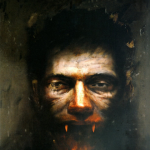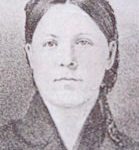
The Mercy Brown Vampire Incident which occurred in 1892, is one of the best documented cases of the exhumation of a corpse in order to perform rituals to banish an undead manifestation.
In Exeter, Rhode Island, the family of George and Mary Brown suffered a sequence of tuberculosis infections in the final two decades of the 19th century. Tuberculosis was called “consumption” at the time and was a devastating and much-feared disease.
The mother, Mary, was the first to die of the disease, followed in 1888 by their eldest daughter, Mary Olive. Two years later, in 1890, their son Edwin also became sick.
In 1891, another daughter, Mercy, contracted the disease and died in January 1892. She was buried in the cemetery of the Baptist Church in Exeter.
Friends and neighbors of the family believed that one of the dead family members was a vampire (although they did not use that name) and caused Edwin’s illness. This was in accordance with threads of contemporary folklore linking multiple deaths in one family to undead activity. Consumption was a poorly understood condition at the time and the subject of much superstition.
George Brown was persuaded to exhume the bodies, which he did with the help of several villagers on March 17, 1892. While the bodies of both Mary and Mary Olive had undergone significant decomposition over the intervening years, the more recently buried body of Mercy was still relatively unchanged and had blood in the heart. This was taken as a sign that the young woman was undead and the agent of young Edwin’s condition. The cold New England weather made the soil virtually impenetrable, essentially guaranteeing that Mercy’s body was kept in freezer-like conditions in an above-ground crypt during the 2 months following her death.
Mercy’s heart was removed from her body, burnt, and the remnants mixed with water and given to the sick Edwin to drink. He died two months later.
Mercy Brown is the most famous of about 100 persons desecrated post mortem in the 1800’s during the more than 75 years of the “New England Vampire Hysteria.” Dr. Michael Bell’s book Food for the Dead comprehensively covers the story of Mercy Brown and outlines the many cases of this frightening and bizarre historical era that earned Rhode Island the historical nickname of being the “Transylvania of North America”.







